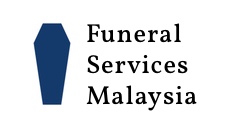Funeral Hearse
A final procession for your loved ones
About Funeral Hearse
Many funeral processions are led by a form of funeral transport called a hearse, which brings the person who died in their graveyard to the place of their funeral and, if buried, to the cemetery or natural burial ground.
More about the Funeral Hearse
A hearse is essentially any vehicle with a long chassis that is adapted to accommodate a coffin behind the driver(s) seats. The hearse transports a body from the funeral or service to the final resting place. It’s an easily identifiable vehicle due to its long backend. In Malaysia, the typical hearse vehicles are either a wagon or most commonly used which is that MPV (Vellfire).
A carefully secured coffin can be transported to a funeral in an ordinary van or estate car, but most people choose for some form of a hearse to lead the funeral procession – also known as a cortege – on the day of the funeral.
Funeral directors typically collect the body of a person who has died in a first call vehicle – a specially modified van with tinted windows so that passers-by cannot see in. The hearse is reserved for the funeral procession.
Why do they call it a Hearse?
The word hearse derives from herce, the Anglo-Norman French word for a harrow, a farming tool used to cover sown seeds with earth. During a funeral, a coffin is rested on a structure called a bier or catafalque, with a cloth, or pall, laid over it.
In the Middle Ages the herce or, in Latin, herpex, was a frame that surrounded this structure and supported the pall. The resemblance of this structure to a harrow inspired the name herce, which eventually evolved into the hearse. By the 1600s, hearse also described any structure that supported the coffin, including the transport that brought it to the church for the funeral service.
The Modern Procession (Cars)
A funeral procession is a procession, usually in motor vehicles or by foot, from a funeral home or place of worship to the cemetery or crematorium. In earlier times the deceased was typically carried by male family members in a coffin to the final resting place. This practice has shifted over time toward transporting the deceased in a hearse, while family and friends follow in their vehicles.
Given that funeral processions are very official affairs, some families employ other special vehicles. Someone working for the funeral home may drive the lead car. This literally leads and guides the procession of mourners to the cemetery.
